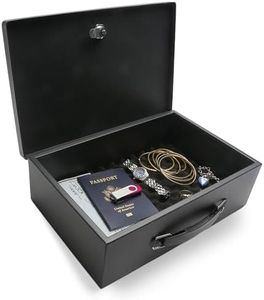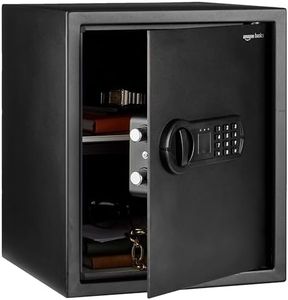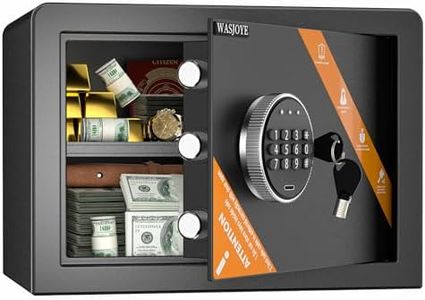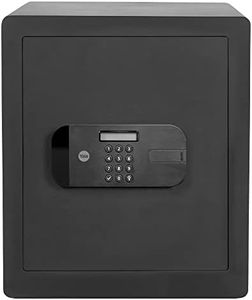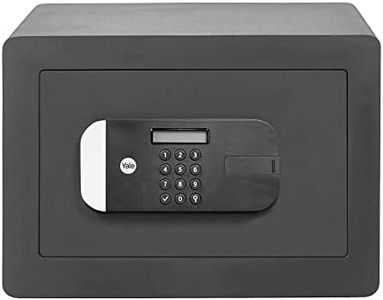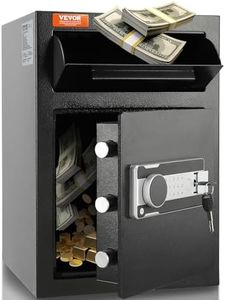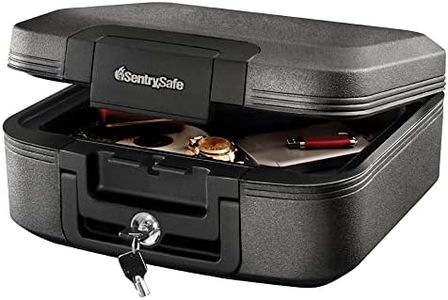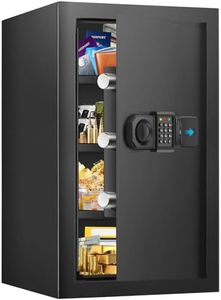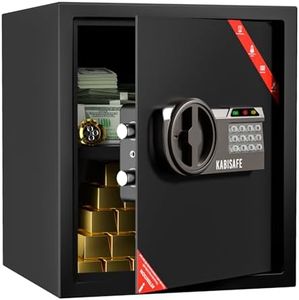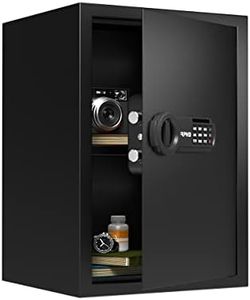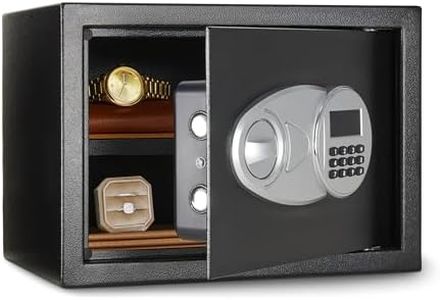We Use CookiesWe use cookies to enhance the security, performance,
functionality and for analytical and promotional activities. By continuing to browse this site you
are agreeing to our privacy policy
10 Best Home Safes
From leading brands and best sellers available on the web.Buying Guide for the Best Home Safes
When choosing a home safe, your main goal is to protect valuable belongings, important documents, or cash from threats like theft, fire, or water damage. It’s important to consider what exactly you want to store, where the safe will be placed, and the potential risks in your environment. Start by identifying what you need secure and think about both the security features and the convenience of accessing your items.Size and CapacitySize and capacity refer to how much room is inside the safe and its overall dimensions. This is important because you’ll want to make sure the safe can hold everything you plan to protect, from documents to jewelry or even hard drives. Smaller safes are easier to hide and move but might not fit larger items, while bigger safes offer more space but require a dedicated area in your home. Consider what you plan to store now, as well as what you might add in the future, and balance convenience with your available space.
Locking MechanismThe locking mechanism is how you open and lock the safe. Common types include mechanical combination dials, digital keypads, biometric (fingerprint) sensors, and traditional keys. Digital keypads and biometric locks allow for quick access and often easy changing of combinations, while dials and keys don’t rely on batteries and can be seen as more reliable over the long term. Think about how often you’ll access the safe and your comfort with technology—if you want quick, frequent access, modern electronic solutions might suit you, while infrequent use might make a classic combination or key lock better.
Fire Protection RatingFire protection rating shows how long and at what temperature a safe can protect its contents during a fire. This matters if you want to safeguard items vulnerable to heat or flames, like documents, cash, or digital media. Ratings are typically given in minutes, such as 30, 60, or 120 minutes at a certain temperature. If you live in an area prone to fires or want to protect extremely sensitive items, look for higher ratings. Choose a rating that matches the potential fire risk and the importance of your items.
Water ResistanceWater resistance indicates whether a safe can protect its contents from water damage due to floods, leaks, or firefighting efforts. Some safes are only fireproof, while others are specifically rated for water resistance. If you live in a flood-prone area, have a basement safe location, or worry about pipes bursting, prioritize safes tested for water resistance. Decide if this is a real risk for you based on where you live and where you’ll keep the safe.
Weight and PortabilityWeight and portability affect both security and convenience. Heavier safes are harder for thieves to carry away but may be more challenging to install or move. Lighter, portable safes are easier to relocate but could be more easily stolen. Some safes can be bolted down for extra security, balancing weight with protection. If you plan to keep the safe in one place, a heavier or bolt-down model might be best; if you’ll need to move it at times, look for portable options—just be sure you’re not sacrificing too much security.
Installation and Placement OptionsHow and where you install the safe affects its effectiveness. Some safes are designed to be wall-mounted, hidden in a floor, or simply placed in a closet. Built-in or concealed safes add a layer of security, as they’re harder to find and remove. Free-standing safes are easier to install but may need additional anchoring. Choose a model that fits your home’s layout and your preferred installation location. Remember, a well-hidden safe can be just as important as a secure one.
